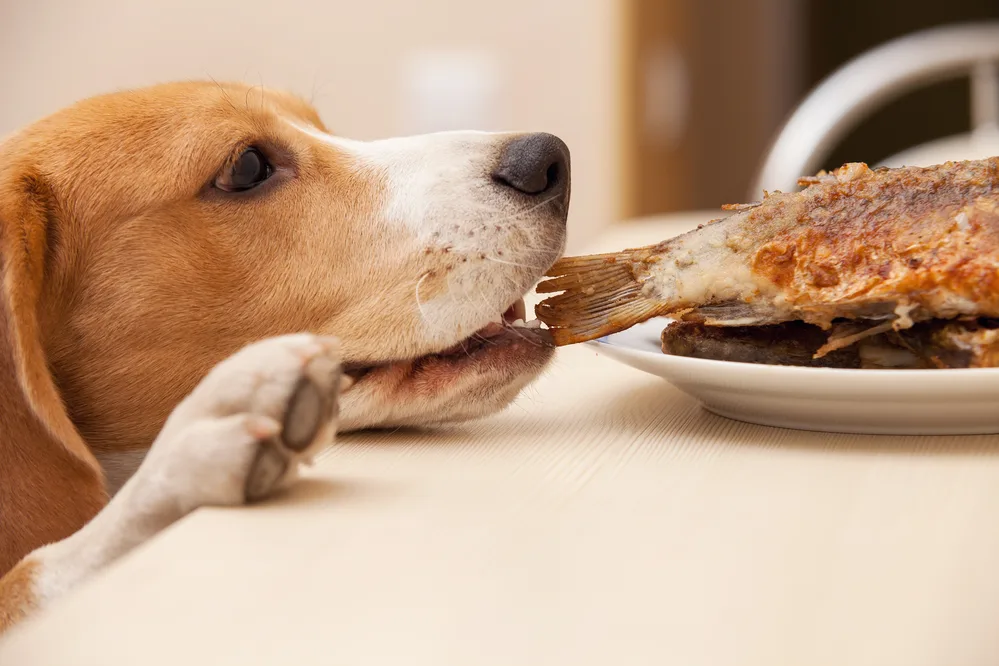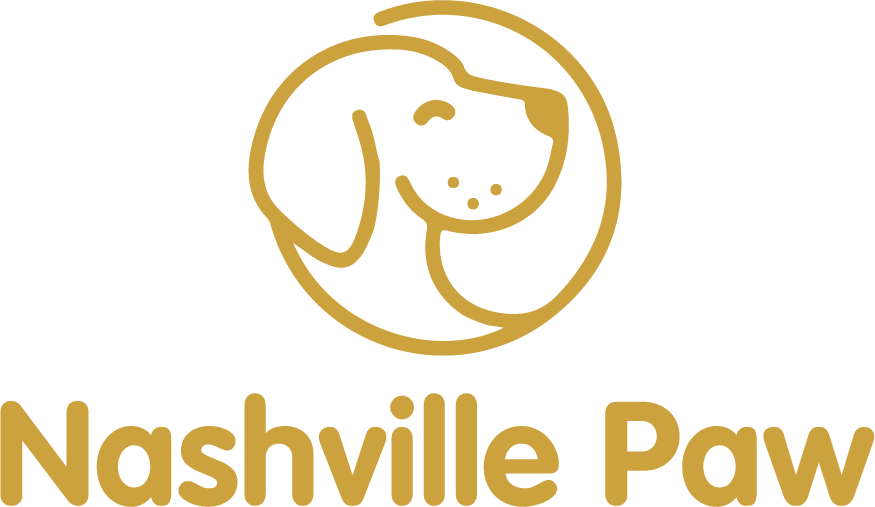Eating and enjoying good food is one of life’s greatest pleasures. As humans, we often take this simple joy for granted.
People don’t always think about how their pets enjoy their food. However, a yummy, healthy diet will increase your dog’s quality of life tenfold!
How can you improve your dog’s diet?
Dogs are omnivores who require certain nutrients to survive. Feeding a high-quality dog food brand, adding supplements, and speaking with your vet can elevate their meals. However, many dog owners make critical mistakes that put their pups at risk.
Stop serving your dog bland meals and give them something that will make their mouth water. Improve your dog’s diet by updating your menu in easy yet delicious ways.
6 Ways to Improve Your Dog’s Diet
It doesn’t take an advanced degree to get canine nutrition right. You can enhance your dog’s diet right from your very own kitchen!
Some owners stick to basic food because of money. However, plenty of affordable kibble brands won’t drain your wallet.
New kibble and a few personal touches will make your dog think they’re eating at a gourmet restaurant. I use several techniques to give my dog, Stella, a tasty and exciting diet.
Choose High-Quality Kibble

First, you need to give your dog a good base. High-quality kibble will meet your pup’s nutritional needs and give you a delicious foundation to build upon.
With the right dog food, you may not even need to add any more “flair.” Vet-recommended brands like Iams, Purina, and Hill’s Science Diet will also improve your dog’s physical health.
For example, a sensitive diet may help if your dog is pooping blood. Now, your pooch can enjoy a mouth-watering dinner without feeling sick.
It’s important to note that not all dog food is created equal (we’ll touch on this later.) In the meantime, watch this video for ten vet-recommended dog food brands!
Add Dog-Safe, Human-Grade Ingredients
Once you’ve chosen a high-quality kibble, you can start “jazzing” things up. For fun additions that have a ton of nutritional value, look in your very own kitchen!
When I worked at a kennel, I saw owners add human-grade foods to their dog’s meals. Here are the most common ingredients and their health benefits:
| Ingredient | Health Benefit |
| Low-Sodium Broth (Chicken or Bone) | Hydration, flavor, digestion |
| Egg (Scrambled or Raw) | Healthy fats, vitamins, calcium (with shell) |
| Green Beans | Low-calorie, filling, micronutrients |
| Pumpkin | High fiber, digestion, vitamins, minerals |
Always introduce a new ingredient slowly. Start by adding it twice a week; if your pup reacts well, you can increase the frequency. Otherwise, give these foods to your pet as a special treat now and again.
Replace Treats With Fruits and Vegetables
Don’t forget about treats when you’re revamping your dog’s diet. Snacks play a big part in canine health and happiness.
Many owners are surprised to learn that Milk Bones and other popular treats are high in calories and low in nutritional value. While they may taste significant to your furry friend, these snacks aren’t doing them any favors.
However, you can’t cut treats out completely. Instead, replace cookies and chews with fruits and vegetables.
Baby carrots and green beans have that satisfying “crunch” without all the extra calories. Blueberries, strawberries, and bananas are vitamin and mineral-dense, adding incredible flavor.
Freeze fruit in water or sugar-free, all-natural juice for a crunchy, cool snack. You could also create yogurt bites as a sweet treat.
Add Supplements
A well-balanced kibble will have all the vitamins, minerals, and nutrients a healthy dog needs. However, supplements may be necessary if you’re feeding holistic foods or your pup has a health condition.
These popular dog supplements boost the nutritional content in pets that need them most. These enhancements can save time, money, and heartache on expensive vet visits.
Think of supplements as your morning vitamins. Healthy humans may take one multivitamin daily to support their overall health. However, those with diseases or dietary deficiencies may need to boost their nutrition.
The same is true for your dog. If your four-legged friend eats a grain-free or raw diet, you’ll need to replace the lost nutrients with glucosamine and taurine.
Consider a Raw Diet
Speaking of raw diets, this dog-food trend can add so much beautiful flavor to your pup’s meals. The trick is finding the right nutritional balance for your unique pet.
Raw diets are exactly what they sound like: uncooked ingredients. Think raw meat, uncooked bones, and whole eggs.
Raw diets can make mealtimes fun for your furry friend! However, it would be best to read up on the risks and benefits of a raw diet before making this lifestyle change.
This meal plan is only for owners with money and time to spare. Dogs can quickly become malnourished if you don’t do enough research.
Consult a Veterinarian
Your dog’s diet isn’t something to take lightly. What they eat plays a massive role in their quality of life. That’s why you should always consult a veterinarian before dieting.
I mentioned earlier that food could help fix common dog health problems. However, you won’t know which brands, formulas, and ingredients your pet need without professional advice.
Your vet knows exactly which nutrients can transform your dog’s health. For example, they may suggest a hypo-allergenic diet if your pooch has skin allergies.
Veterinarians also know which human-grade ingredients are safe for canine consumption. They can help you make small changes that don’t cost a fortune or require a massive lifestyle change.
4 Dog Food Mistakes To Avoid

As you’ve learned, improving your dog’s diet is all about balance. You can do all of the right things and still make serious mistakes.
Fear of problems shouldn’t keep you from feeding your furry friend delicious food. Avoiding these four dog-food mistakes will put you on a tasty path to success.
Transitioning Food Too Quickly
Humans can eat a variety of foods and feel fine. However, domestic dogs aren’t used to drastic diet changes.
Altering your pup’s diet too quickly often leads to gastrointestinal problems like:
- Vomiting
- Diarrhea
- Gas
- Bloating
- Bloody stool
If you change your dog’s food, do it slowly. A proper diet transition should take several weeks.
Start by replacing 1/4th of your dog’s meal with the new food. Do this for one week. Add a 1/4th of fresh food every week until they are fully transitioned.
Depending on how well your dog reacts to their new diet, this schedule may look different. Slow the timeline if your pet needs more time to adjust.
This rule is valid whether you’re transitioning to kibble, human-grade ingredients, or a raw diet. As the saying goes, “slow and steady wins the race.”
Buying Brands Without Food Studies
Earlier, I mentioned that all dog food isn’t created equal. This is because some brands do their research called “feed studies.”
Brands like Hill’s Science Diet, Purina, and Royal Canin conduct their research to find the perfect formula for different pets. Other brands try to mimic recipes without putting the work in.
This practice results in poorly-balanced diets that cause more harm than good. For example, if your dog’s breath smells bad, it could be a poor choice of dog food.
Look at the ingredient list on your dog food bag. The first five ingredients are the most abundant in the formula. You should consider switching to higher-quality kibble if they aren’t whole foods like chicken, corn, carrot, or wheat.
Feeding Too Much Human-Grade Food
Human-grade food can make your dog’s diet more exciting. However, having too much of a good thing is always possible.
Some human-grade foods are high in fat, which leads to pancreatitis and other gastrointestinal problems in dogs. While a snack now and then won’t hurt, an overabundance could cause health problems.
Did you know that your dog can be “overnourished?” This happens when they consume too much of a specific vitamin or mineral.
Don’t just throw new ingredients into your dog’s bowl on a whim. Carefully select supplements, treat, and human-grade foods to enhance your dog’s diet.
Making Choices Without Professional Help
How do you know if you’re feeding your dog too much or too little of something? The only surefire way to tell is by seeking professional help.
You know your dog best, but that doesn’t mean you’re a canine health and nutrition expert. However, veterinarians have extensive training to help you make an informed decision.
Changing your pup’s diet without expert guidance is the most common dog-food mistake I see. Give your vet a call and ask their opinion on brands and ingredients; if they don’t know the answer, they have resources they can use to help along the way.
FAQs
What are the best human foods to feed dogs?
Some good human-grade foods to feed dogs include pumpkin, eggs, bone broth, goat’s milk, and chicken. Fruits and vegetables like carrots, blueberries, bananas, and green beans also make excellent snacks.
Is canned tuna good for dogs?
Canned tuna is safe for dogs in small amounts. However, canned tuna often contains a lot of salt and other preservatives that could harm your pet if you give it too often.
What is the best protein for dogs?
Chicken, turkey, beef, and lamb are excellent protein sources because they are easily digestible. Venison, rabbit, and salmon are good choices if your dog has a protein allergy.
Bottom Line
With the proper guidance and prep work, you can make your dog meals that taste like they’re from a Michelin-star restaurant. As long as you listen to professional advice and invest in high-quality ingredients, your dog will eat better than you!
